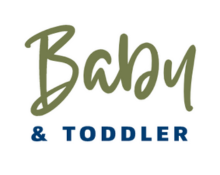
Blocked milk ducts can occur when the milk flow is obstructed within the milk ducts of the breast. This can lead to localized pain, swelling, and a firm, tender lump in the breast. Here are some tips to help relieve and prevent blocked milk ducts:
Keep breastfeeding or pumping: Continue to breastfeed or pump frequently and ensure that your baby is effectively draining the breast during feedings. Emptying the breast regularly helps prevent milk from pooling and reduces the risk of blocked ducts.
Massage and apply heat: Before breastfeeding or pumping, gently massage the affected breast and apply a warm compress or take a warm shower to help promote milk flow and relieve any blockage. You can use a warm towel or a heating pad on a low setting. Massage from the blocked area towards the nipple in a circular motion to encourage milk flow.
Nurse on the affected side first: Start each feeding on the breast with the blocked duct. The strong suction during initial feedings can help clear the blockage. Encourage your baby to nurse with their chin pointing towards the affected area to focus the suction on that spot.
Vary breastfeeding positions: Experiment with different breastfeeding positions to ensure that all areas of the breast are adequately drained. Positions such as the football hold or leaning forward while breastfeeding can help facilitate better milk flow in the affected area.
Gentle breast compression: During breastfeeding or pumping, use your hand to apply gentle pressure behind the blocked area, moving towards the nipple. This can help loosen the blockage and encourage milk flow.
Take breaks for breast massage: Take breaks during breastfeeding or pumping to massage the affected area. Use your fingertips to apply gentle pressure and massage in a circular motion towards the nipple. This can help break up the blockage and promote milk flow.
Ensure a proper latch: Ensure that your baby is latching onto the breast properly. A shallow latch can contribute to ineffective milk removal and increase the risk of blocked ducts. Seek support from a lactation consultant if needed.
Rest and self-care: Get plenty of rest and take care of yourself. Stress and fatigue can affect milk flow and increase the likelihood of blocked ducts. Ensure that you’re eating a balanced diet, staying hydrated, and getting enough sleep.
If despite these measures the blockage does not resolve or if you develop symptoms of an infection, such as fever, increasing pain, or redness, it is important to seek medical attention. A healthcare professional can provide further guidance and may suggest additional treatments such as warm compresses, gentle ultrasound massage, or medications if necessary.
